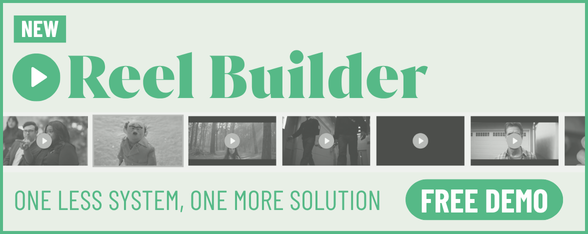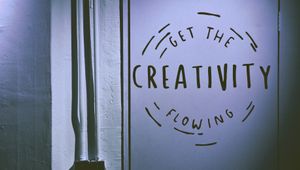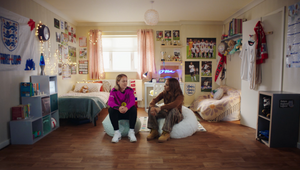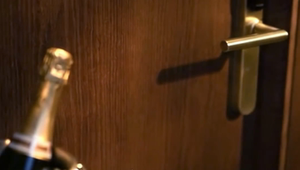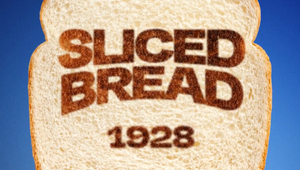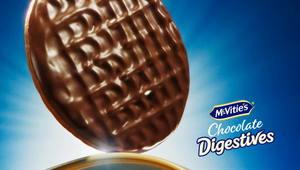
Strategy as a Creative Act with Donna Yan

Donna Yan began her strategic career in Australia, where she learned the art of resilience –fighting the harsh climate and complex business challenges.
These early experiences sparked her passion for tackling difficult problems that require creative, lateral thinking. Nowadays, she’s strategy director at TBWA\London
But she has also worked in Sydney, London, and Amsterdam on projects big and small; from making TV shows for Coca-Cola, to using wet wipes as a media channel for KFC.
She believes the power of advertising is to make the mundane, sublime, and one day she would like to win an Emmy for advertising.
LBB> What do you think is the difference between a strategist and a planner? Is there one?
Donna> In creative agencies, there really is no difference. Planner is a historical hangover from a time when no one knew what to call the people that did the bit that wasn’t account service or creative.
I’ve been a planner, a strategist and even a ‘strategic planner’ – which seems silly now to imply that there is a type of planning that wasn’t strategic.
These days, I’m happy with either, but thankfully, I’ve moved on from trying to call myself both.
LBB> And which description do you think suits the way you work best?
Donna> I gravitate towards the humbleness of ‘planner,’ but early in my career, a producer asked me whether I enjoyed organising timelines. I had to explain that I was, in fact, not a project manager.
So perhaps strategist is more accurate and descriptive.
LBB> We’re used to hearing about the best creative advertising campaigns, but what’s your favourite historic campaign from a strategic perspective? One that you feel demonstrates great strategy?
Donna> Hands down – Diamond Shreddies.
There is a lot of lore in the industry, but the inception of this campaign is one of my favourites.
The story goes that Shreddies, an ageing square-shaped cereal sold in Canada, the UK, and New Zealand, wanted to reassert their dominance in the breakfast market. An intern at the ad agency looked at one and said, ‘It’s not a square, it’s a diamond,’ and Diamond Shreddies was born. It was an NPD launch that required no change to the product at all. The brand created fake focus group videos and an ad featuring factory workers wondering how the diamond ones got out.
For me, it’s what advertising can do at its best, which is to help people (including clients) see what might be mundane or overlooked in a whole new light.
LBB> When you’re turning a business brief into something that can inform an inspiring creative campaign, do you find the most useful resource to draw on?
Donna> People.
Someone once told me cracking a brief often comes down to having a good conversation, and it’s true.
I’ve never written a worse brief by actually speaking to the people we’re meant to be advertising to.
I also always talk to the creatives. They know what’s going to excite them. Strategy doesn’t happen in a black hole.
And after all of that, I try to find what sticks in my head. So I talk to…myself? I have found that things that make me laugh or make me think twice tend to stick in other people’s heads, too. It’s not because I'm some sort of genius, but more because, at the end of the day, we're more alike than we’re different.
LBB> What part of your job/the strategic process do you enjoy the most?
Donna> Also, talking to people.
I’ve realised over time that I work iteratively. My favourite part of the process is when we get to talk things out and challenge each other in constructive ways.
Is the creative brief as tight and clear as it could be? Is the work what we want to make? Are we doing what the client wants or is there a better way to solve the problem?
These questions can be challenging, but it’s not being afraid to ask them and expecting the same from each other that helps us get to better places.
LBB> What strategic maxims, frameworks, or principles do you find yourself going back to over and over again? Why are they so useful?
Donna> I don’t use frameworks much anymore, but there are two questions I’m always trying to answer.
What does this client really need? And what do I find most interesting?
There’s a lot of strategy that can solve a problem but doesn’t have the inspirational quality that will get you to somewhere new.
I want to do work that solves a problem but does it in a way that no one has seen before.
LBB> What sort of creatives do you like to work with? As a strategist, what do you want them to do with the information you give them?
Donna> Talkative ones.
I like thinking alone, but I love thinking together. It can mean sometimes the boundaries between departments get a bit blurred and creative directors wonder why I’m constantly stopping them for hallway conversations, but that’s the way I like to work.
I’d like creatives to see strategy as an inspiration rather than restrictions. The reality is that we might be showing you the walls of the sandbox, but what I hope we do is give creatives better toys to play with inside the sandbox.
LBB> There’s a negative stereotype about strategy being used to validate creative ideas, rather than as a resource to inform them and make sure they’re effective. How do you make sure the agency gets this the right way around?
Donna> I don’t have a problem with strategy being used to validate creative. It’s a part of the process to explain why an idea is strategically sound. Strategy should be there throughout the process.
But if you want strategy to lead, part of the job is to be a springboard, not a straightjacket.
The point is to get to the right direction with creatives so you’re not working in a silo and giving teams a deadend to work with.
LBB> What have you found to be the most important consideration in recruiting and nurturing strategic talent?
Donna> I look for funny people.
A sense of humour is usually a good sign that someone can make connections that other people can’t see. It’s a clue that they might approach things in slightly more unconventional ways. And it usually comes with a self-awareness that’s useful in an industry that can sometimes forget that it’s only advertising.
LBB> In recent years it seems like effectiveness awards have grown in prestige and agencies have paid more attention to them. How do you think this has impacted on how strategists work and the way they are perceived?
Donna> The awards are important because they create a standard that we should be striving for, but we always have to take them with a grain of salt.
They make the process seem far less chaotic and much more of a science than it really is. The risk is that they create the illusion that great work can come from a formula. You unearth the real problem, discover a transformative insight, and get to interesting-shaped work, and it was amazingly effective.
The truth is that it rarely happens that way. Advertising is the middle ground between insanity and rationality, and strategy is there to help everyone tread the tightrope.
LBB> Do you have any frustrations with planning/strategy as a discipline?
Donna> Less of a frustration, more of a reminder that strategy is also a creative act. Rationality and rigour are vital, but they only get you so far. Strategy needs logic, but great strategy entertains novelty.
LBB> What advice would you give to anyone considering a career as a strategist/planner?
Donna> Hone your taste. Look at all the work you like and try to understand why.
Do it in a way where you can explain it clearly to someone else.
And then try and beat it.






